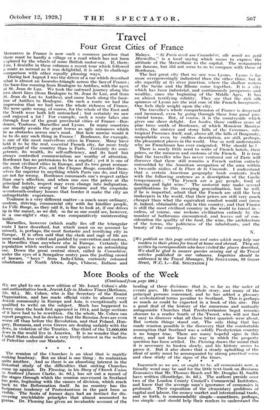The reunion of the Churches is an ideal that is
rapidly making headway. But an ideal is one thing ; its realization quite another. And so there is an absorbing interest in the historical study of the difficulties that uniting Churches come up against. Dr. Fleming, in his Story of Church Union in Scotland (James Clarke, 3s. 6(1.), has set out a record of the stages through which the reunion movement in Scotland has gone, beginning with the causes of division, which reach back to the Reformation itself. In no country has the fissiparous tendency of Protestantism in the past been so visible. The Scots of former days had an instinct for dis- covering unyieldable principles that almost amounted to genius. Dr. Fleming has given an invaluable account of the
healing of these divisions---that is, so far as the order of events goes. He knows the whole story, and many of the principal persons concerned, and he has added a glossary of ecclesiastical terms peculiar to Scotland. This is perhaps as much as could be expected in a book of this size. But a good deal of the history of the numerous and mutually antagonistic Churches that Presbyterianism begot remains obscure to a reader South of the-Tweed, who will not find it easy to discover what all these bitter quarrels were about. But certain things stand out. The only thing that has made reunion possible is the discovery that the comfortable assumption that Scotland was a solidly Presbyterian country is no longer true. There are many hopeful signs in this story, and not the least the way in which the property question has been settled. Dr. Fleming draws the that it is necessary to hasten slowly, and his history seems to prove it. But it also shows that a steady upholding of the ideal of unity must be accompanied by strong practical sense and close study of the signs of the times.








































 Previous page
Previous page